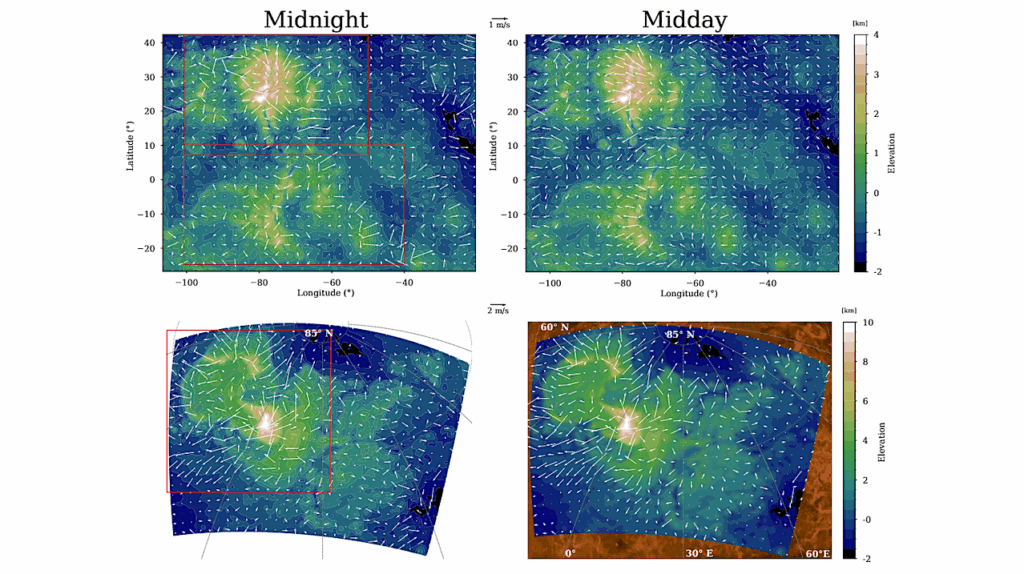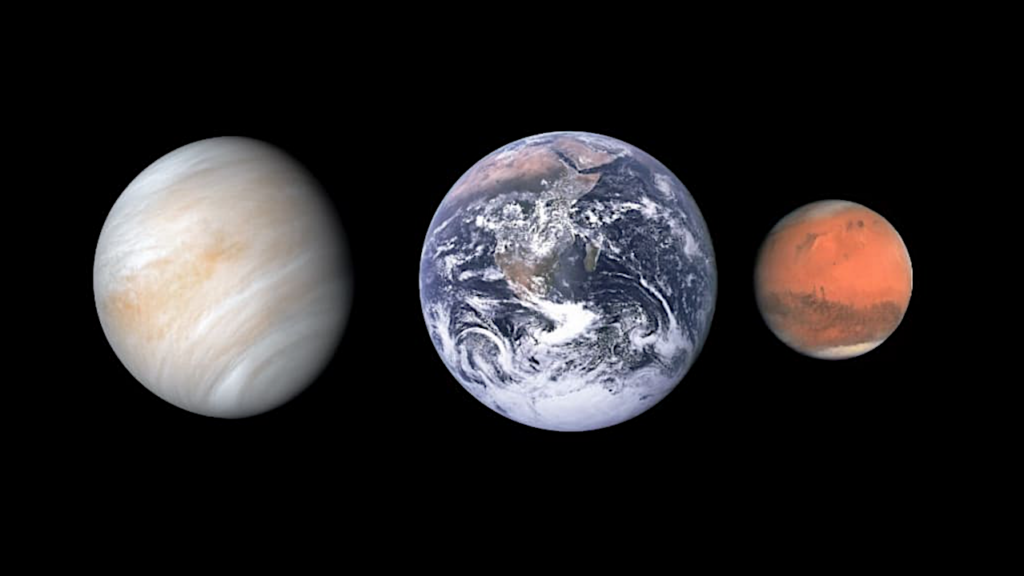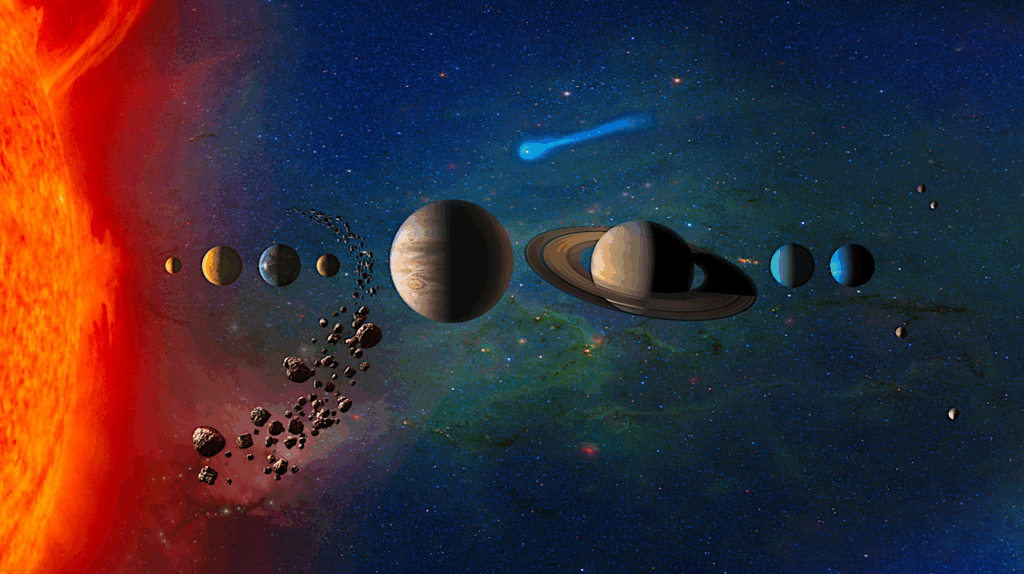Venus As An Exoplanet: I. An Initial Exploration Of The 3-D Energy Balance For A CO2 Exoplanetary Atmosphere Around An M-Dwarf Star

The chemical evolution of an exoplanetary Venus-like atmosphere is dependent upon the ultraviolet to near ultraviolet (FUV-NUV) radiation ratio from the parent star, the balance between CO2 photolysis and recombination via reactions that depend on the water abundance, and various catalytic chemical cycles.
In this study, we use a three-dimensional (3-D) model to simulate conditions for a Venus-like exoplanet orbiting the M-dwarf type star GJ 436 by varying the star/planet distance and considering the resultant effects on heating/cooling and dynamics. The simulation includes the middle and upper atmosphere (<40 mbar). Overall, these model comparisons reveal that the impact of extreme ultraviolet to ultraviolet (EUV-UV) heating on the energy balance shows both radiative and dynamical processes are responsible for driving significant variations in zonal winds and global temperature profiles at < 10−5 mbar.
More specifically, CO2 15-μm cooling balances EUV/UV and Near InfraRed (NIR) heating at altitudes below 10−7 mbar pressure with a strong maximum balance for pressures at ~10−5 mbar, thus explaining the invariance of the temperature distribution at altitudes below 10−5mbar pressure for all cases. Our model comparisons also show that moderate changes in NIR heating result in relatively small changes in neutral temperature in the upper atmosphere, and virtually no change in the middle atmosphere. However, with larger changes in the NIR heating profile, much greater changes in neutral temperature occur in the entire upper and middle atmosphere studied.
Christopher D. Parkinson, Stephen W. Bougher, Franklin P. Mills, Renyu Hu, Guillaume Gronoff, Jiazheng Li, Amanda Brecht, Yuk L. Yung
Comments: 44 pages, 11 Figures, 3 tables
Subjects: Earth and Planetary Astrophysics (astro-ph.EP); Solar and Stellar Astrophysics (astro-ph.SR)
Cite as: arXiv:2205.10958 [astro-ph.EP] (or arXiv:2205.10958v1 [astro-ph.EP] for this version)
Submission history
From: Christopher Parkinson
[v1] Sun, 22 May 2022 23:40:10 UTC (5,106 KB)
https://arxiv.org/abs/2205.10958
Astrobiology








